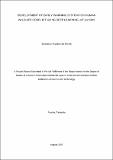| dc.description.abstract | Human-wildlife conflict is a significant challenge to communities living in areas close to
wildlife game parks and reserves. It is more evident in the United Republic of Tanzania whose
economy depends on agriculture and wildlife tourism as a significant source of income for her
citizens and foreign exchange respectively. The proposed system is a low-power and low-cost
early-warning system using deep learning, Internet of Things (IoT) and Short Message Service
(SMS) to support human-wildlife conflict response teams in mitigating these problems. The
proposed system comprises three basic units: sensing unit, processing unit, and alerting unit.
The sensing unit consists of a Global Positioning System (GPS) module, a passive infrared
(PIR) sensor, and a Raspberry Pi camera. The PIR sensor module detects animal nearby using
its heat signature, the GPS collects and records the current system location while the Raspberry
pi camera takes an image after the PIR sensor has detected the animal nearby using its heat
signature. The processing unit with the main unit uses a Raspberry microcomputer to perform
image inferencing using the “you look only once” (YOLO) algorithm and data processing. The
last unit is an alerting unit that uses Global System for Mobile Communications module to send
an alerting SMS message to the community response team leader and the human-wildlife
conflict response team whenever wild animals are detected near the park’s border. Therefore,
the system detects, identifies, and reports wild animals detected using SMS. General Packet
Radio Service cellular network provides internet connectivity for the purpose of data collection
to enable monitoring and storage in the cloud. An online visualization system was developed
using google maps to show the location of wildlife detected by the camera trap. The park
rangers track the wildlife online to acquire important information before the wildlife wanders
out of the park. This system was developed using the open-source Raspberry pi which is cost effective even for low-income communities who are targeted by the system | en_US |

